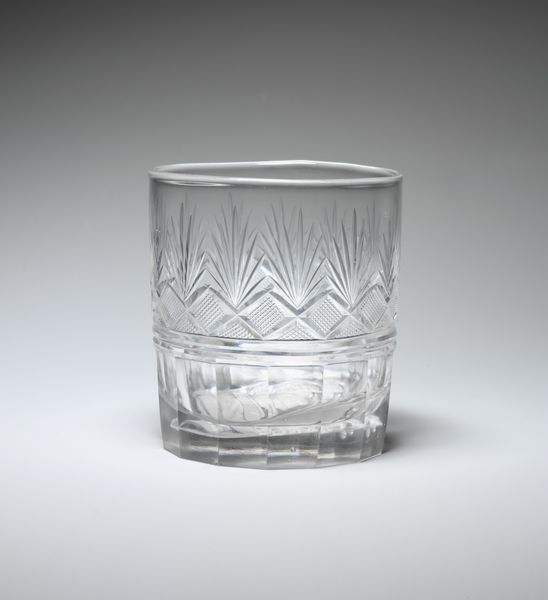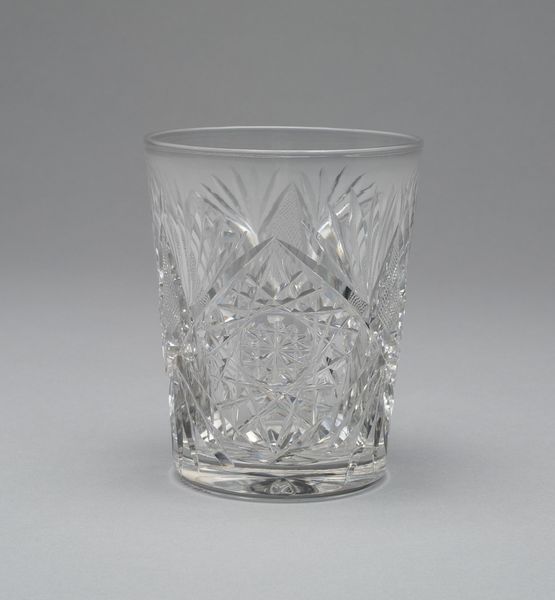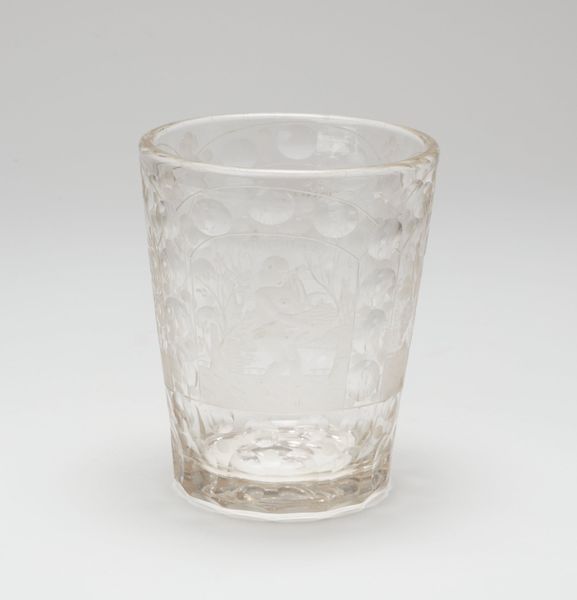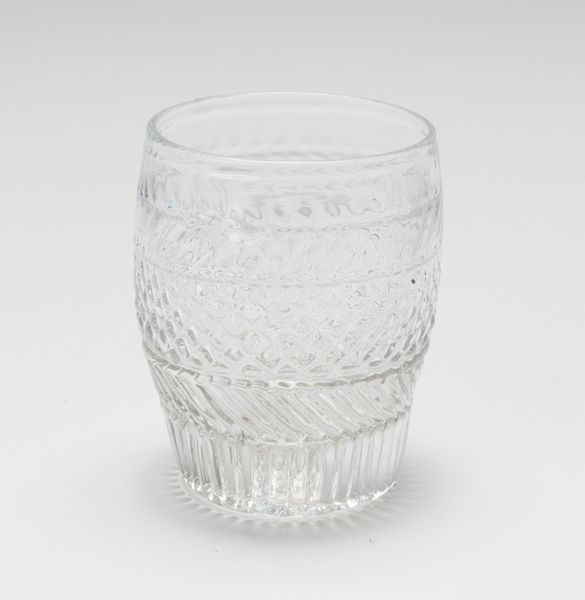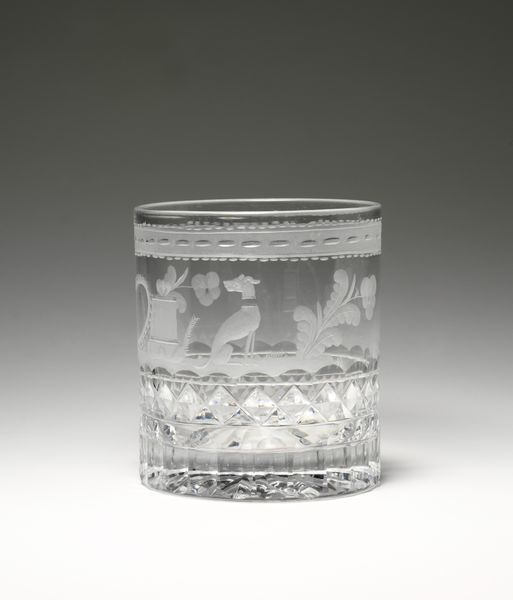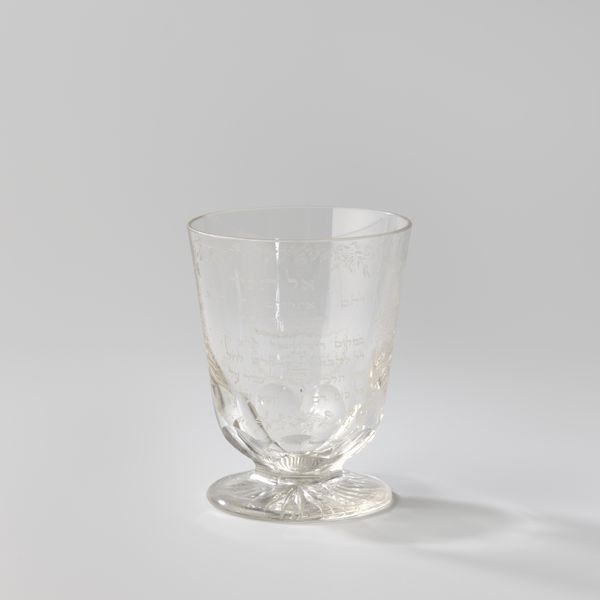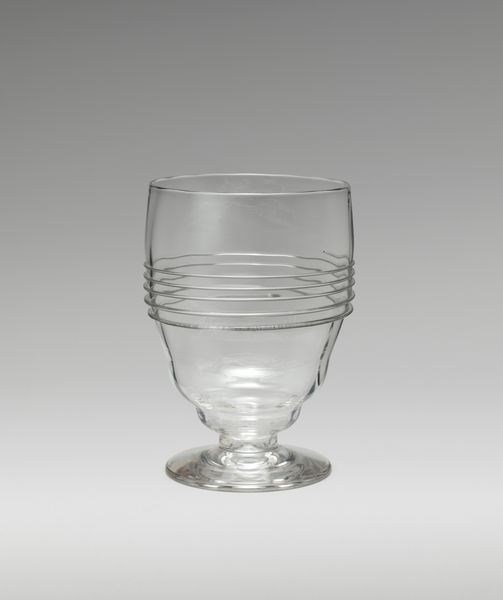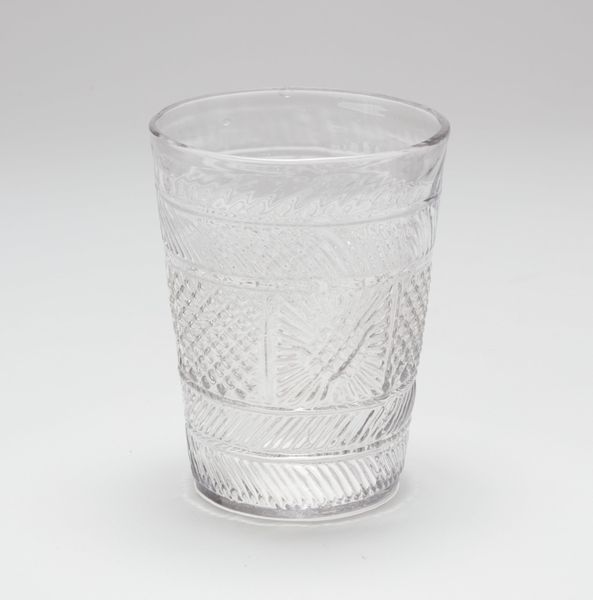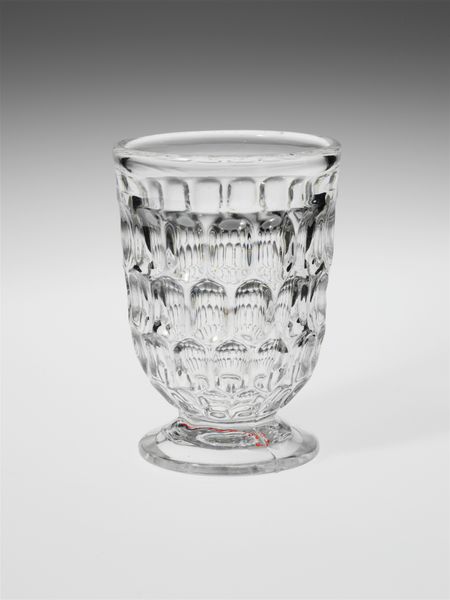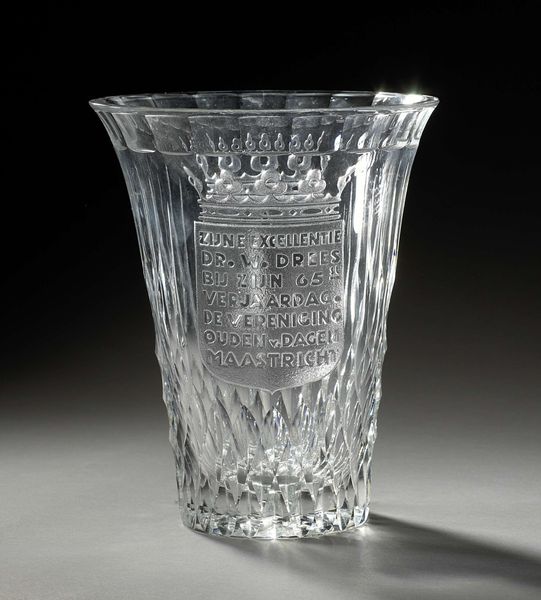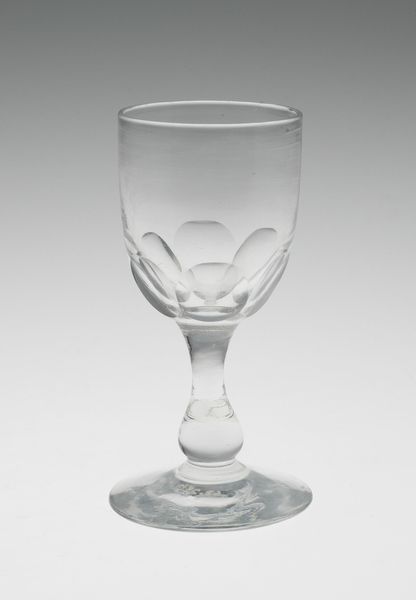
glass
#
glass
#
ancient-mediterranean
#
ceramic
#
decorative-art
Dimensions: H. 3 in. (7.6 cm); Diam. 3 in. (7.6 cm)
Copyright: Public Domain
Editor: So, here we have a glass tumbler, made around 1825 by the New England Glass Company. It's currently housed in the Metropolitan Museum of Art. The glass is surprisingly clear, almost ethereal, but it's the pattern of wheat stalks that really grabs my attention. What symbolism do you see embedded in this piece? Curator: The wheat is key. Throughout history and across many cultures, wheat is an almost universal symbol of sustenance, prosperity, and cycles of life and death. Consider its presence in ancient Egyptian art, or as a Eucharistic symbol representing Christ's body in Christian iconography. Even outside explicitly religious contexts, gifting someone a tumbler with wheat might evoke blessings of abundance and health. Editor: That makes a lot of sense. It's fascinating how a seemingly simple object can carry so much cultural weight. So it wasn’t only about decoration? Curator: Not at all! This piece reveals layers of meaning. The decision to use wheat suggests the values and aspirations of the era – connecting people to the land, prosperity and perhaps to ideas of the divine. Now, considering its placement on a *tumbler*, a drinking vessel, what new symbolic associations emerge? Editor: It almost feels like a blessing over a daily ritual…something humble and routine. I appreciate how the analysis of one visual component can unearth symbolic layers! Curator: Exactly. And now consider how this one symbol participates in your personal constellation of memories, beliefs, and values. The life of a symbol extends far beyond its origins.
Comments
No comments
Be the first to comment and join the conversation on the ultimate creative platform.
